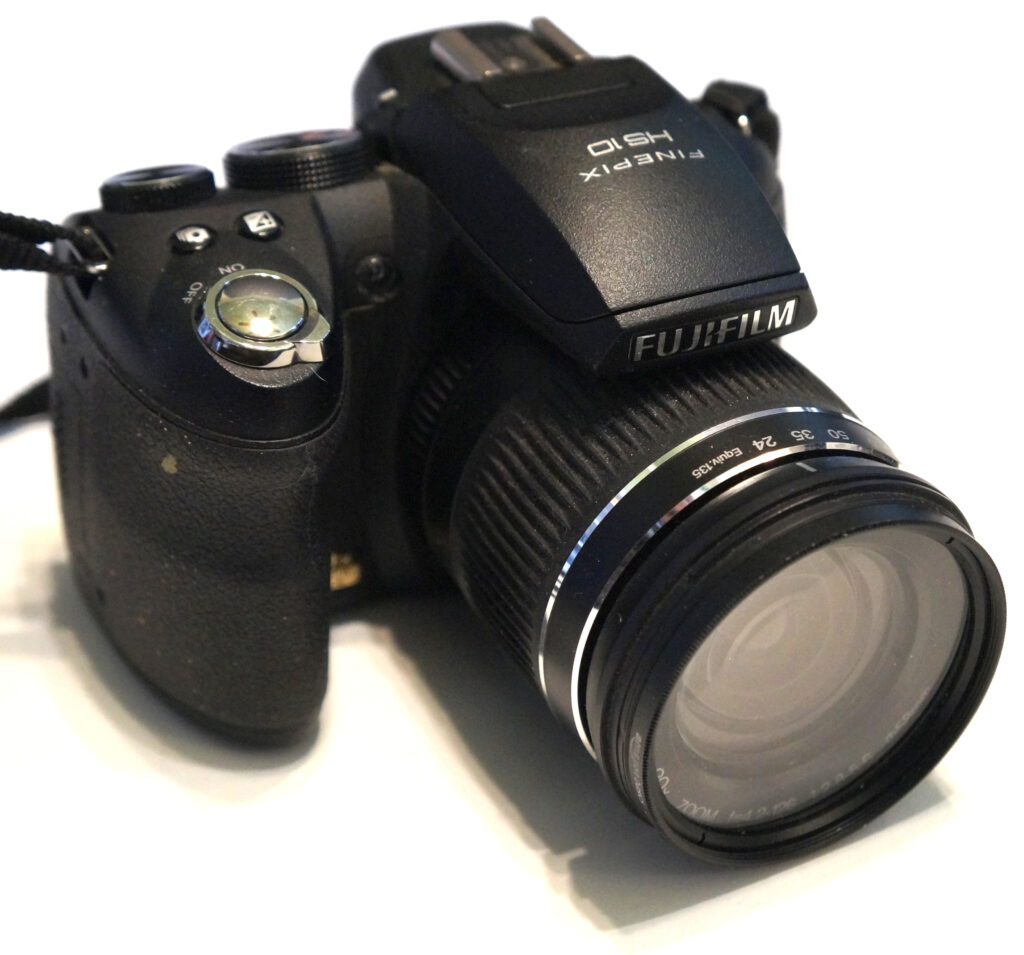
Everyone knows that big sensors are better. All other things being equal (and all other things never are equal, but we’re doing our best to make a fair comparison), a larger sensor will create less noise and better pictures. It will also give the clever photographer more control over depth of field, so that the photographer can go to photography fora on the Internet and talk about bokeh with other people who appreciate a good bokeh and like to use the word bokeh in casual conversation.
Not many photographers talk about the advantages of little sensors, though, and since old Pa Pitt has a contrarian streak, he will step into the void.
Aside from the cost, there are three important advantages to small sensors.
The first is the size of the lenses. Father Pitt’s Fuji superzoom has a lens whose focal length would range from 24mm to 720mm—if it were on a full-frame camera. (“Full frame” in digital cameras means having a sensor the size of a negative or slide from a 35mm film camera.) Now, a 720mm lens on a full-frame camera would be awfully heavy. It would want its own seat on the streetcar. It would not slip neatly into Father Pitt’s little plaid camera bag with room for two other cameras.

The second big advantage is depth of field. Photographers love to talk about bokeh, because knowing the word bokeh is one of the main things that set them apart as real photographers. It just means “blur” in Japanese, but “blur” doesn’t sound technical at all. And it is certainly true that how the out-of-focus parts of an image look is an important part of the aesthetic impression it makes, and good blur can be used to emphasize the things that are sharply in focus.

But deep focus is also valuable—having everything in focus throughout the image, even at widely disparate distances from the lens. Father Pitt will not go into the technical details of how sensor size and aperture interact to affect depth of field. The important thing for our discussion is that, whereas larger sensors allow more distinction in focus, smaller sensors have the opposite virtue: they allow more indiscriminate focus, making it easier to have everything in the image in focus at once. This can also be a desirable quality. In the history of art, as far as old Pa Pitt knows, it never occurred to a painter to blur the background to emphasize the foreground, until photographic images had made us aware of that possibility. We do not naturally perceive the world as partly focused and partly blurred. As soon as we think of an object in a scene, our eyes focus on that object. It takes an unnatural effort to focus on one object while being aware of the part of our vision that is out of focus. The popularity of the buzzword bokeh, Father Pitt thinks, has caused photographers to suppose that images are attractive only when they have proper blur. In old Pa Pitt’s opinion, blur is a special effect to be used sparingly and with intent.

The third big advantage of small sensors is in macrophotography. It takes special lenses or extension tubes to focus very close with a full-frame sensor. Many relatively inexpensive digital cameras, though, can focus down to half an inch without breaking a sweat. Moreover, the depth-of-field advantage of a small sensor makes it possible to get a reasonable picture of a tiny object in reasonable focus. Photographers often resort to making “focus stacks” of thirty or more images to get one in-focus picture of a tiny thing, but in many cases the same effect could be yours just by using a much cheaper camera.

So is old Pa Pitt recommending that you dump your expensive SLR and pick up a cheap superzoom instead? No, but he is recommending that you pick up a superzoom in addition. A big sensor gives you a huge advantage in image quality, as well as the ability to play with bokeh until you’re absolutely sick of hearing the word bokeh. But there are many times when a small sensor is a big advantage. Having the right camera for those occasions will make it much easier to get the picture you want.